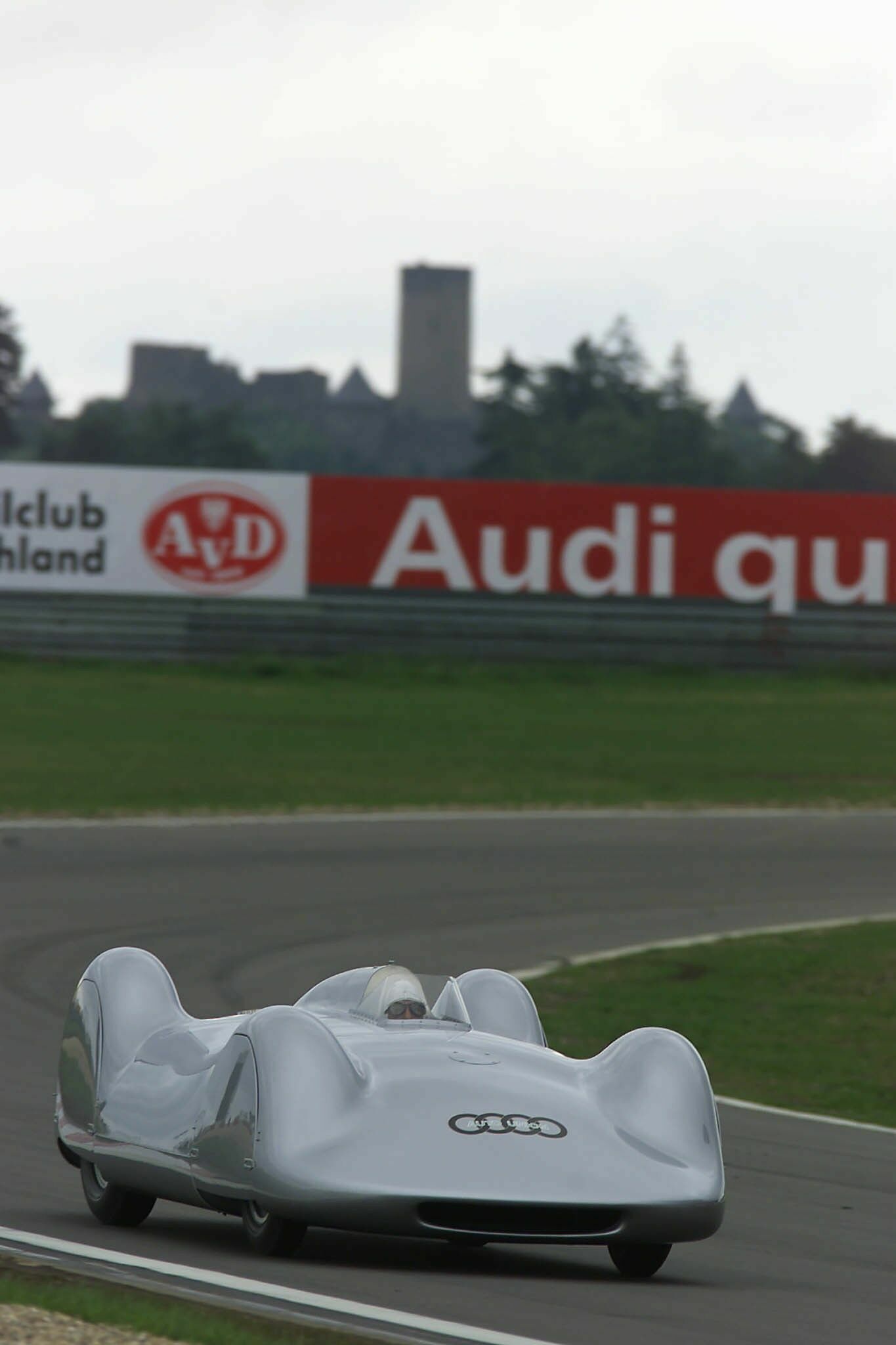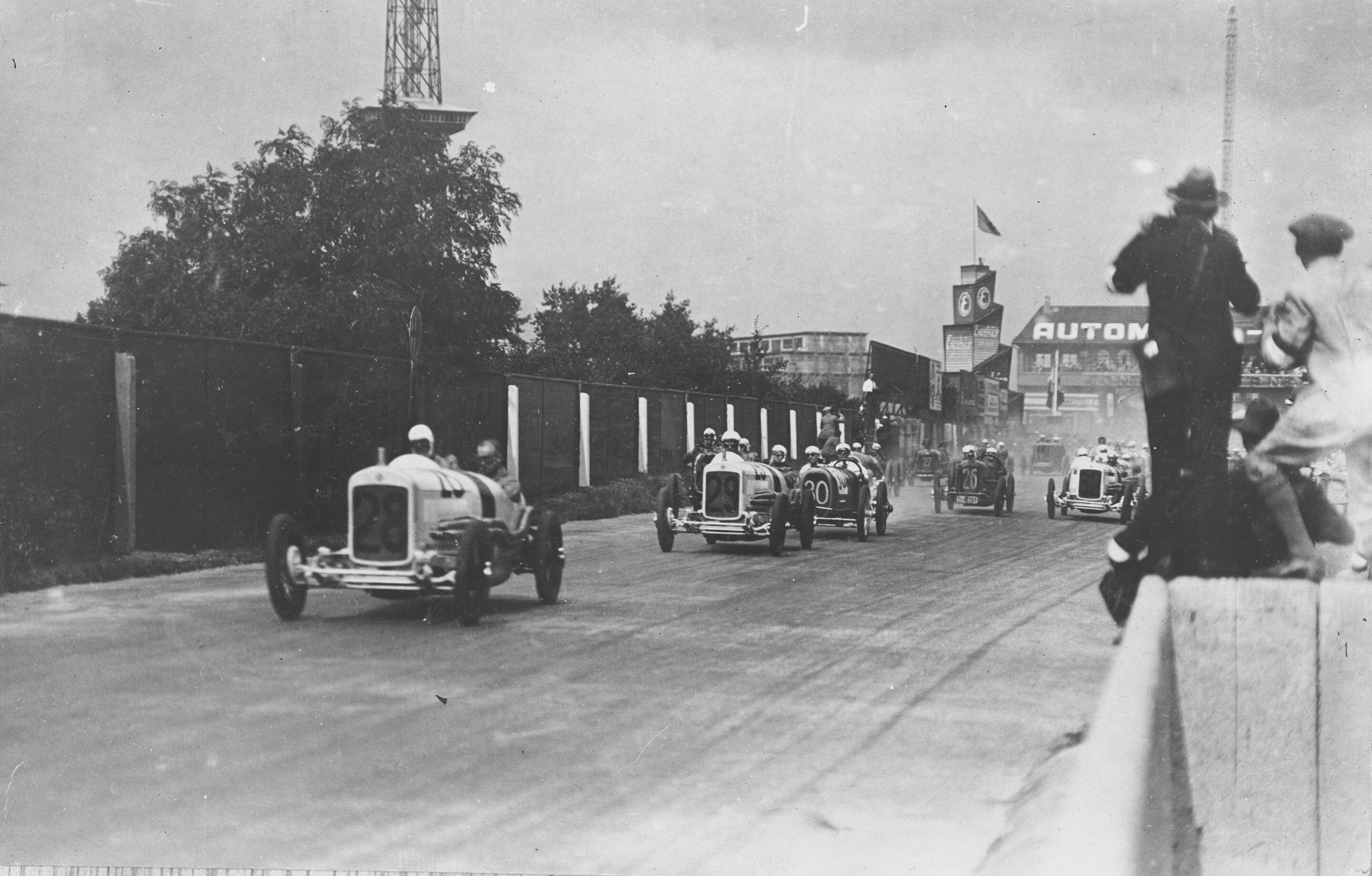Search
All search results for "avus"
(54)
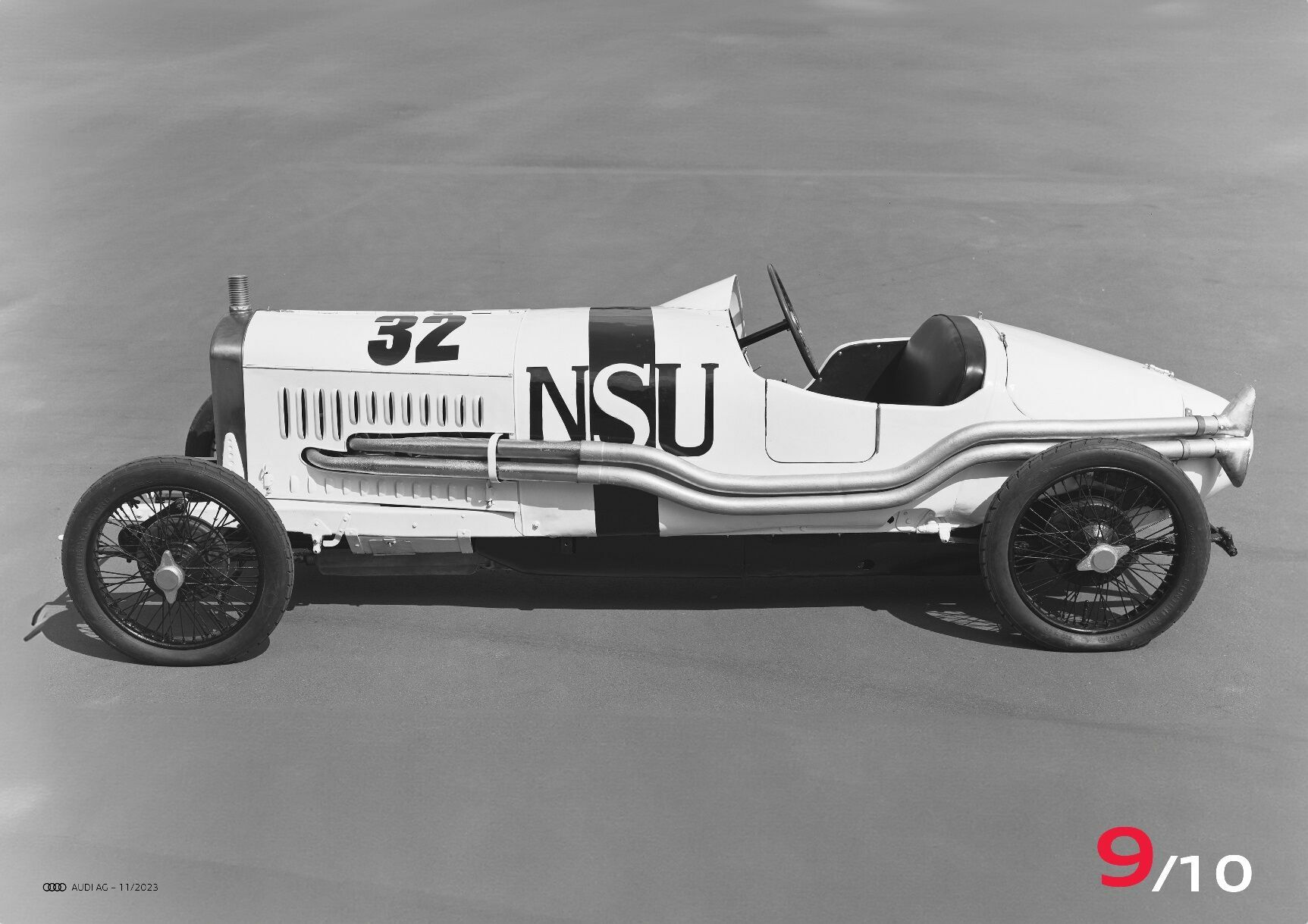 Quadruple victory for NSU Type 6/60 PS racing car at the German Grand Prix on the AVUS circuit
Quadruple victory for NSU Type 6/60 PS racing car at the German Grand Prix on the AVUS circuit
A quadruple victory by the white supercharged six-cylinder cars in their class at the first German Grand Prix on the AVUS circuit in Berlin in 1926 stands out in the story of NSU racing between the two world wars. In this ninth episode on the history of NSU to mark the brand’s 150th anniversary, Audi Tradition presents the pre-war NSU Type 6/60 PS racing car.
NSU participated in international automobile races as early as 1908. The company’s participation in the 1909 Prince Henry Tour — and numerous endurance and reliability races — was a great success. After World War I, the Automobil-Verkehrs- und Übungsstraße (AVUS) opened in Berlin in 1921. The circuit, which was closed to public traffic until 1940, served as the first race and test track in Germany to demonstrate the competitiveness of the country’s automotive industry. A “small” NSU, the NSU 8/24 PS, won its class at the first AVUS race in September 1921. The basic design of the racing version was the same as the production model; all the Neckarsulm-based company had to do was modify the car slightly to create an open-top racing two-seater. The company, then known as Neckarsulmer Fahrzeugwerke Aktiengesellschaft, returned to the drawing board and developed the NSU Type 6/60 PS specifically for racing. This racing car was NSU’s first six-cylinder model. The “6” designated its “tax horsepower”, which was necessary for classification in its tax class. The open two-seater had an output of 60 PS and weighed 830 kilograms (1,830 lb) with a top speed of 175 km/h (109 mph). It was built in 1925 and 1926 – regulations of the time meant it came only in white, the designated color for German racing. In 1925, the Neckarsulm-based company entered one of the new six-cylinder supercharged racing cars in the 450-kilometer International Taunus Race – and won.
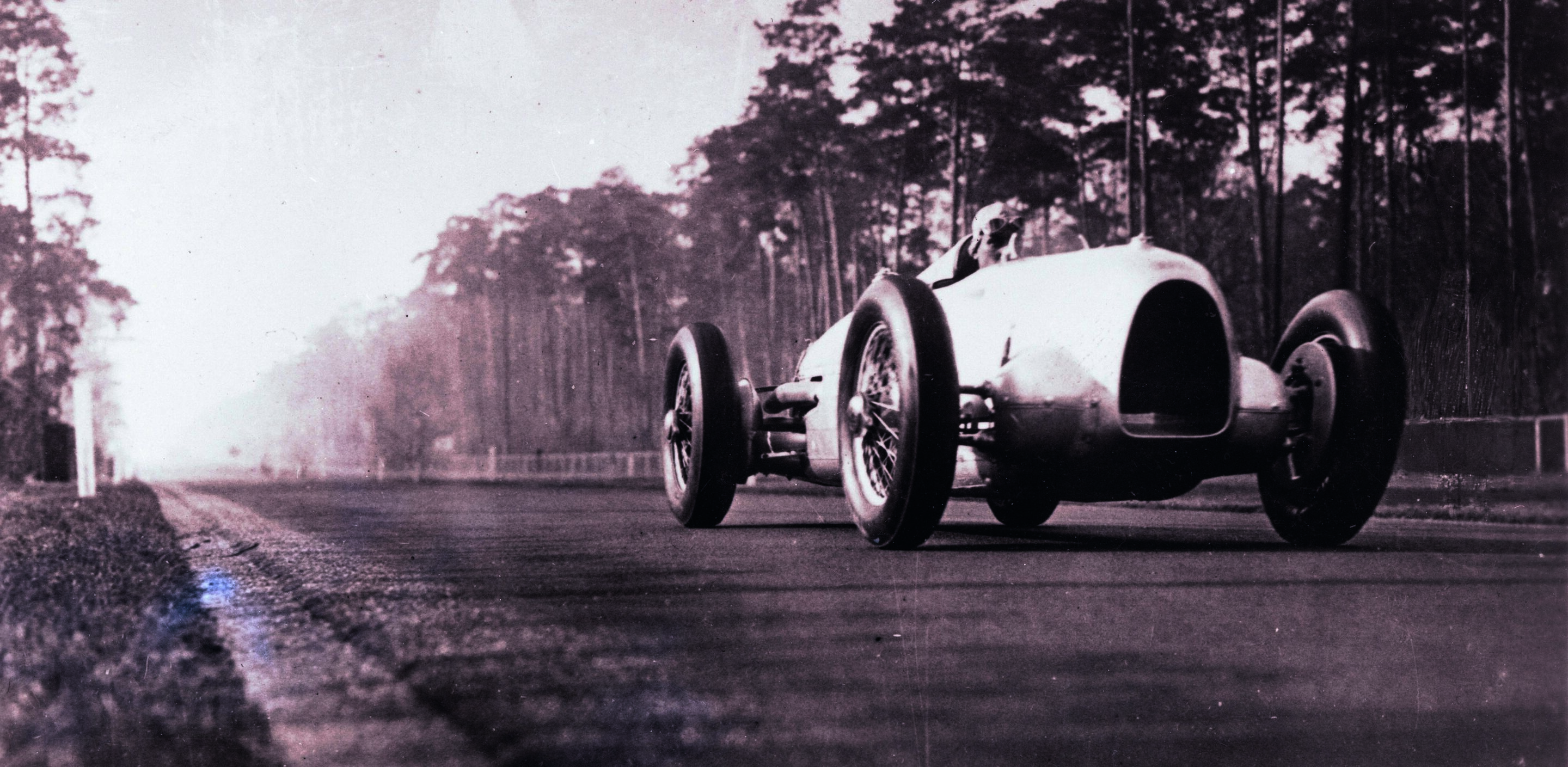 How the “Silver Arrow” legend was born
How the “Silver Arrow” legend was born
75 years ago, the Auto Union Silver Arrows went to the starting grid for the first time on the Avus circuit in Berlin Auto Union and Mercedes Benz dominated international motor racing between 1934 and 1939
75 years ago, one of the most dramatic chapters in the whole of motor sport history began. On May 27, 1934 the German racing cars that were soon to acquire the nickname “Silver Arrow” were entered for their first race, on the Avus racetrack in Berlin. Although neither Auto Union, the company from which Audi in its present-day form developed later, nor Mercedes Benz won that event, it was not long before these two manufacturers began to dominate international Grand Prix racing, a situation that prevailed until the outbreak of the Second World War in 1939. It seems almost incredible today, but by 1936 the Auto Union racing cars were reaching speeds of up to 380 kilometres an hour on the long straights of the Avus circuit – truly, the birth of a legend.
The racing cars bearing the four-ring emblem were entered for the race to be held on Berlin’s Avus circuit on May 27, 1934. Driven by Hans Stuck, August Momberger and Hermann Prince zu Leiningen, this was their first appearance in competition. They were given a striking silver paint finish, but possibly their most remarkable feature was that the engine was located behind the driver. 1934 was the first motor racing season in which the designers had to comply with a new formula: the cars were limited to a total dry weight of 750 kilograms, but the engines could be of any size and there was no restriction on the type of fuel. Ferdinand Porsche was the brain behind the Auto Union racing cars, so to speak. He designed them for the new motor-vehicle manufacturing group of that name that had been created in 1932 by a merger of the Audi, DKW, Horch and Wanderer brands, and supervised their construction and testing from March 1933 onwards at Auto Union’s racing department, which was located at the Horch factory in Zwickau.
 Audi Tradition to commemorate numerous anniversaries in 2025
Audi Tradition to commemorate numerous anniversaries in 2025
After test drives in October 1934 with the Grand Prix racing car on the AVUS in Berlin, the Auto Union racing department started developing the vehicle that would later be known as the “Lucca” car. Just a few weeks later, in December 1934, it was presented during initial test drives on the AVUS. The record attempts were planned in Hungary but were moved to Italy at the last minute due to bad weather. The one-kilometer and one-mile records were targeted to be broken with a flying start on a five-kilometer stretch between Pescia and Altopascio. Test drives took place on February 14, 1935, and the next day, on February 15, the car piloted by Hans Stuck performed as planned and was heralded the “world’s fastest road-going car.” With a speed of 326.975 km/h reached near Lucca, the vehicle broke 26 world records and 13 international class records. The “Anniversary Dates 2025” booklet contains several additional anniversaries to discover, including 25 years of the first Audi victory at Le Mans and 25 years of Audi allroad quattro, 35 years of Audi duo hybrid vehicles, 40 years of fully galvanized bodies in large-scale automotive engineering, 50 years of the Audi 80 GTE, 55 years of the Audi 100 Coupé S, 60 years of the NSU Prinz 1000 TT and NSU Type 110, 75 years of the first post-war DKW passenger car, and 90 years of the Horch 850 series. A complete overview of the anniversary booklet is available in the Audi MediaCenter.
 Audi Tradition to commemorate numerous anniversaries in 2026
Audi Tradition to commemorate numerous anniversaries in 2026
One hundred years ago, NSU scored a remarkable quadruple victory in the 1.5-liter class with the NSU 6/60 PS at the first “German Grand Prix” on the AVUS circuit in 1926. Ninety years ago, the Auto Union Type C dominated the 1936 racing season, winning three of five Grand Prix events, half of the circuit races, and every hill climb entered by Auto Union AG. Six decades later – in 1996 – Audi achieved seven wins in seven countries: at touring car championships in Germany, Italy, Great Britain, Belgium, Spain, Australia, and South Africa, the 285 PS Audi A4 quattro STW impressively demonstrated the superiority of quattro all-wheel drive. Further anniversaries compiled by Audi Tradition historians include: 30 years of the Audi A3, 35 years of the Audi Cabriolet, 45 years of the Audi research car, 50 years of the second-generation Audi 100, 70 years since the DKW 3=6 Monza record run, 70 years of the DKW Munga off-road vehicle, and 70 years of NSU speed records. A comprehensive overview of these milestones is provided in “Anniversary Dates 2026,” available in the Audi MediaCenter.
Recommendations
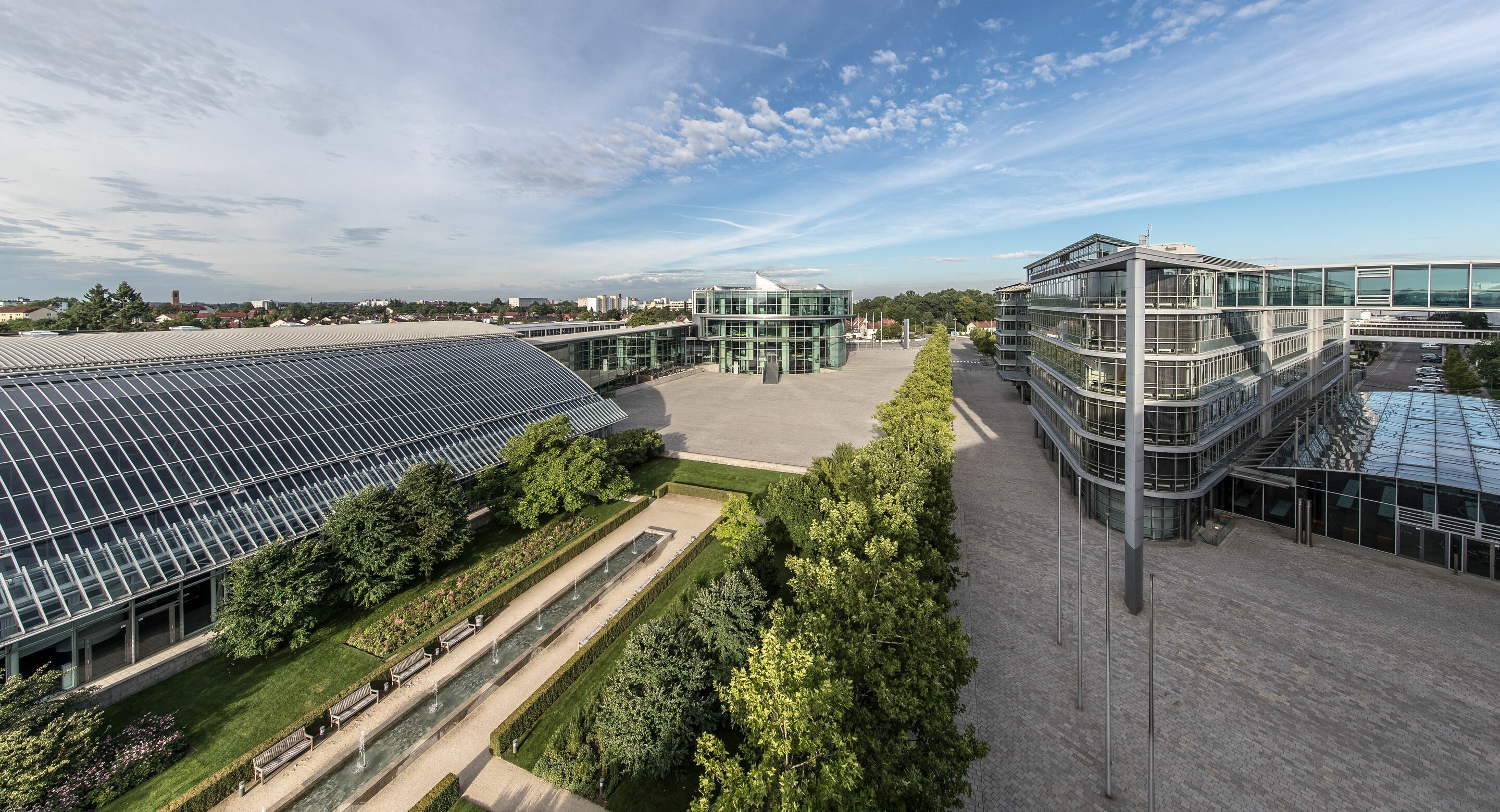 Audi Forum Ingolstadt
Audi Forum Ingolstadt
The gastronomical experience comprises the live cooking market restaurant, the AVUS fine dining restaurant and the Bar & Lounge. Companies from across Germany value the conference area with conference rooms of various capacities.
AudiStream - experience the world of Audi
With AudiStream, interested parties can get an online glimpse into the world of Audi. In a variety of interactive streams, tour guides lead them through the production sites in Ingolstadt and Neckarsulm, for example.
Pictures
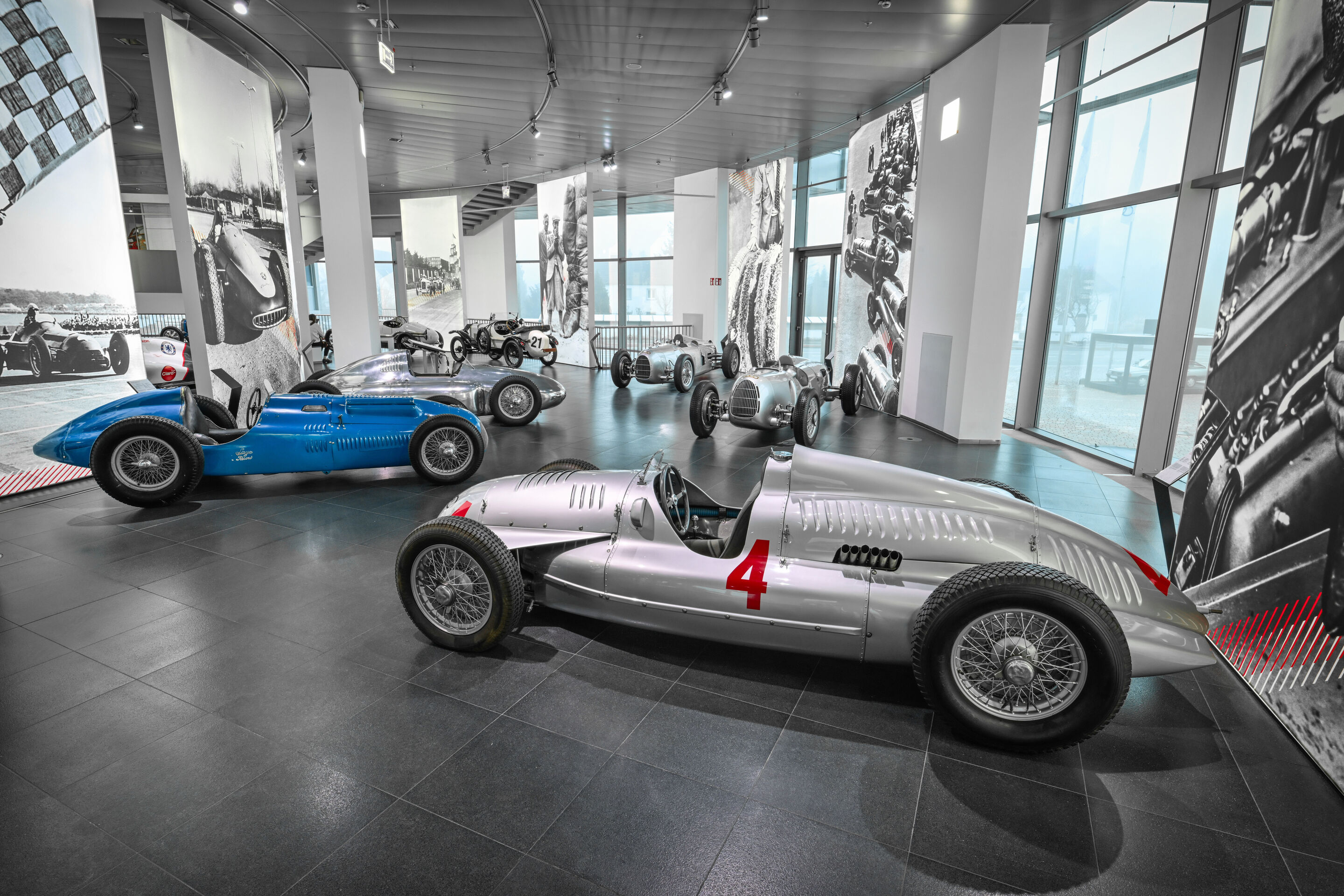 Pure performance at the Audi museum mobile: New “Legends of Grand Prix” exhibition
Pure performance at the Audi museum mobile: New “Legends of Grand Prix” exhibition
Almost 100 years ago, on July 11, 1926, NSU celebrated a highly acclaimed quadruple victory in the 1.5-liter class at the first German Grand Prix at the AVUS with its all-white racing car. Another highlight of the exhibition is the Bugatti Type 35 C – one of the most successful racing cars of all time. Its eight-cylinder engine delivers 95 PS thanks to a twin carburetor; with the Roots supercharger used since 1926, the power output increases to up to 130 PS. Other vehicles in the exhibition include a 1928 Wanderer W8; the Auto Union Grand Prix racing cars Type A, Type C and Type D from the 1930s; a Cisitalia 360 from 1947; a Toleman-Hart TG184 from 1984, which Ayrton Senna also drove; and a Jordan 191 from 1991, in which Michael Schumacher drove his first F1 race. The two most recent models, the Sauber C31 from 2012 and the F1 show car with Audi Launch Livery from 2022, complete the exhibition and take visitors into the preparatory phase of the 2026 Formula 1 season, in which Audi will be competing for points with its own factory team for the first time. The Audi museum mobile at the Audi Forum Ingolstadt is open Monday to Friday between 9 a.m. and 5 p.m. and from 10 a.m. to 4 p.m. on Saturdays, Sundays, and public holidays. It is closed from December 22, 2025 until January 6, 2026. Meanwhile you can discover the special exhibition “Legends of Grands Prix” anytime via the Audi Tradition app which is available at the App Store and the Google Play Store.
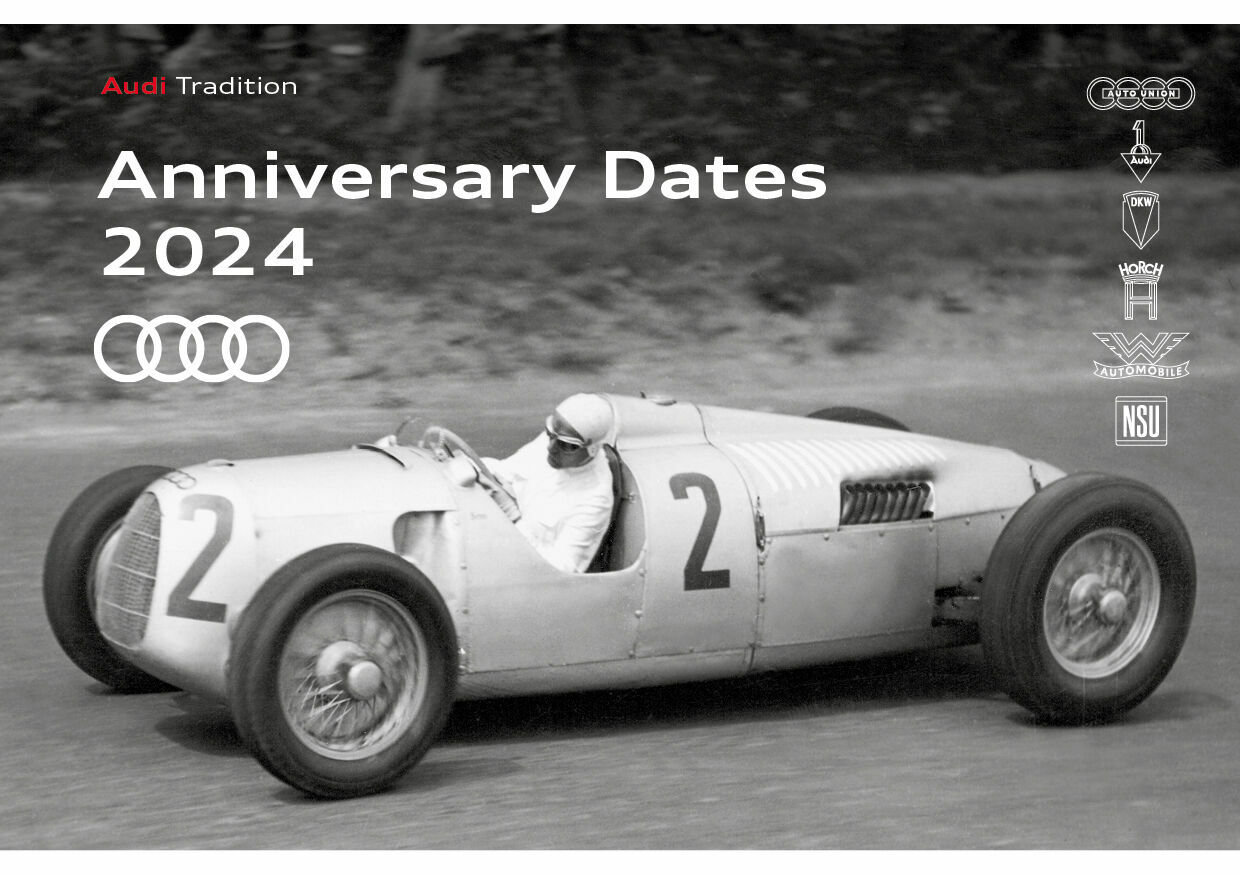 Audi Tradition to celebrate multiple anniversaries in 2024
Audi Tradition to celebrate multiple anniversaries in 2024
The Auto Union racecar made its first official appearance at the AVUS in Berlin on March 6, 1934, with Hans Stuck at the wheel. A few weeks later, on May 27, 1934, the Auto Union Type A, as it was called internally, made its debut on the international racing scene, ushering in the booming era of the Auto Union Silver Arrows.
 Home again: the last Auto Union Type D twin-supercharger Silver Arrow returns to Audi
Home again: the last Auto Union Type D twin-supercharger Silver Arrow returns to Audi
On the long straights of the Avus circuit in Berlin in 1937, Rosemeyer’s car was timed at 380 km/h. The Second World War put an abrupt end to what had become known as the supercharger era. Mercedes-Benz was able to rescue almost all its Silver Arrow cars after Germany’s total collapse, but fate was less kind to Auto Union. Zwickau was occupied by the Soviet Army, Auto Union was liquidated and the factories shut down. The Russian occupying forces found the Silver Arrows where they had been stored: in a mine building above ground. The cars were carried off to the Soviet Union as part of Germany’s reparation payments, and all trace of them was soon lost in that vast country. The vehicles best able to pay tribute to Auto Union AG’s great motor sport heritage were thus regarded as irrecoverably lost by the new Auto Union GmbH (today’s AUDI AG) when it was established in Ingolstadt in 1949. The Cold War had already begun and the Iron Curtain was firmly in place. Only one Auto Union Type C remained accessible; it had been presented to the Deutsches Museum in Munich before the war, but was later damaged in a bomb attack there. At the end of the 1970, the first rumours were heard to the effect that one of the long lost Auto Union racing cars had been located somewhere in the vast region of the former Soviet Union. Paul Karassik, an American collector of high-class classic vehicles, came to Europe with his wife Barbara, whose family came from Germany, and began to search for the car. As a small boy he had been a spectator in Belgrade at the last Grand Prix held before the Second World War – an unforgettable experience. Later, after emigrating to the USA and becoming a wealthy man, it proved to be useful to him in his search that he came from a White Russian family, had grown up in Serbia and spoke fluent Russian.


